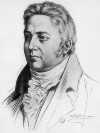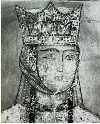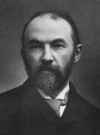 In Japanese, kamikaze means “divine wind,” a reference to the typhoon that foiled the Mongol invasion of Japan in 1281. In World War II, the term was used for Japanese pilots who made deliberate suicidal crashes into enemy targets. Such attacks sank 34 ships and damaged hundreds, killing thousands. In the lead up to the Battle of Leyte Gulf, the Royal Australian Navy’s HMAS Australia became perhaps the first ship damaged by a kamikaze. How many kamikaze attacks did it survive? Discuss
In Japanese, kamikaze means “divine wind,” a reference to the typhoon that foiled the Mongol invasion of Japan in 1281. In World War II, the term was used for Japanese pilots who made deliberate suicidal crashes into enemy targets. Such attacks sank 34 ships and damaged hundreds, killing thousands. In the lead up to the Battle of Leyte Gulf, the Royal Australian Navy’s HMAS Australia became perhaps the first ship damaged by a kamikaze. How many kamikaze attacks did it survive? Discuss
Source: The Free Dictionary
 A Chinese holiday,
A Chinese holiday,  One of the most versatile and influential figures in the English Romantic movement, Coleridge was a poet and critic who perfected a sensuous lyricism in his poetry that was echoed by many later poets. His most famous works include “Rime of the Ancient Mariner” and “Kubla Khan.” Known for his influential lectures on Shakespeare, he later wrote Biographia Literaria, the most significant work of general literary criticism of the Romantic period. To what drug was Coleridge addicted?
One of the most versatile and influential figures in the English Romantic movement, Coleridge was a poet and critic who perfected a sensuous lyricism in his poetry that was echoed by many later poets. His most famous works include “Rime of the Ancient Mariner” and “Kubla Khan.” Known for his influential lectures on Shakespeare, he later wrote Biographia Literaria, the most significant work of general literary criticism of the Romantic period. To what drug was Coleridge addicted?  Queen Tamar ruled the Kingdom of Georgia from 1184 to 1213, ascending to the throne after her father’s death. Her outstanding success as a ruler during Georgia’s “golden age” earned her the nickname “King of Kings and Queen of Queens.” Tamar led the Georgian army in a number of military victories, and, in the early 13th century, Georgia annexed the Armenian capitals of Ani and Dvin. Tamar also suppressed a number of rebellions during her reign. Where is she buried?
Queen Tamar ruled the Kingdom of Georgia from 1184 to 1213, ascending to the throne after her father’s death. Her outstanding success as a ruler during Georgia’s “golden age” earned her the nickname “King of Kings and Queen of Queens.” Tamar led the Georgian army in a number of military victories, and, in the early 13th century, Georgia annexed the Armenian capitals of Ani and Dvin. Tamar also suppressed a number of rebellions during her reign. Where is she buried? .jpg) The Johnny Bright Incident was an allegedly racially-motivated on-field assault against black football star Johnny Bright by white player Wilbanks Smith during a college football game between Bright’s Drake University and Smith’s Oklahoma A&M. The assault—which resulted in a broken jaw for Bright—was captured in a Pulitzer Prize-winning photo sequence. The incident highlighted the racial tensions of the times and even provoked changes in college football rules. What happened to Smith?
The Johnny Bright Incident was an allegedly racially-motivated on-field assault against black football star Johnny Bright by white player Wilbanks Smith during a college football game between Bright’s Drake University and Smith’s Oklahoma A&M. The assault—which resulted in a broken jaw for Bright—was captured in a Pulitzer Prize-winning photo sequence. The incident highlighted the racial tensions of the times and even provoked changes in college football rules. What happened to Smith? .jpg) This Japanese festival is named after
This Japanese festival is named after  Though now known as the greatest architect of the English baroque style, Wren was first a celebrated astronomer and mathematician who was one of the founders of the Royal Society. His architectural career began in 1661 when King Charles II appointed him assistant to the royal architect. Wren went on to help rebuild more than 50 churches destroyed in the Great Fire of London in 1666. He also designed Saint Paul’s Cathedral, where he is buried. What famous epitaph appears on Wren’s burial marker?
Though now known as the greatest architect of the English baroque style, Wren was first a celebrated astronomer and mathematician who was one of the founders of the Royal Society. His architectural career began in 1661 when King Charles II appointed him assistant to the royal architect. Wren went on to help rebuild more than 50 churches destroyed in the Great Fire of London in 1666. He also designed Saint Paul’s Cathedral, where he is buried. What famous epitaph appears on Wren’s burial marker?  Prosopagnosia is a disorder of face perception where the ability to recognize faces is impaired, while the ability to recognize objects may be relatively intact. Because prosopagnosia is a variegated disorder, with patients exhibiting different types and levels of impairment, face perception is now theorized as utilizing a specialized brain system and involving multiple stages that can be interrupted in many ways. What techniques do prosopagnosia sufferers use to recognize people?
Prosopagnosia is a disorder of face perception where the ability to recognize faces is impaired, while the ability to recognize objects may be relatively intact. Because prosopagnosia is a variegated disorder, with patients exhibiting different types and levels of impairment, face perception is now theorized as utilizing a specialized brain system and involving multiple stages that can be interrupted in many ways. What techniques do prosopagnosia sufferers use to recognize people?  Everybody is so talented nowadays that the only people I care to honor as deserving real distinction are those who remain in obscurity.
Everybody is so talented nowadays that the only people I care to honor as deserving real distinction are those who remain in obscurity.